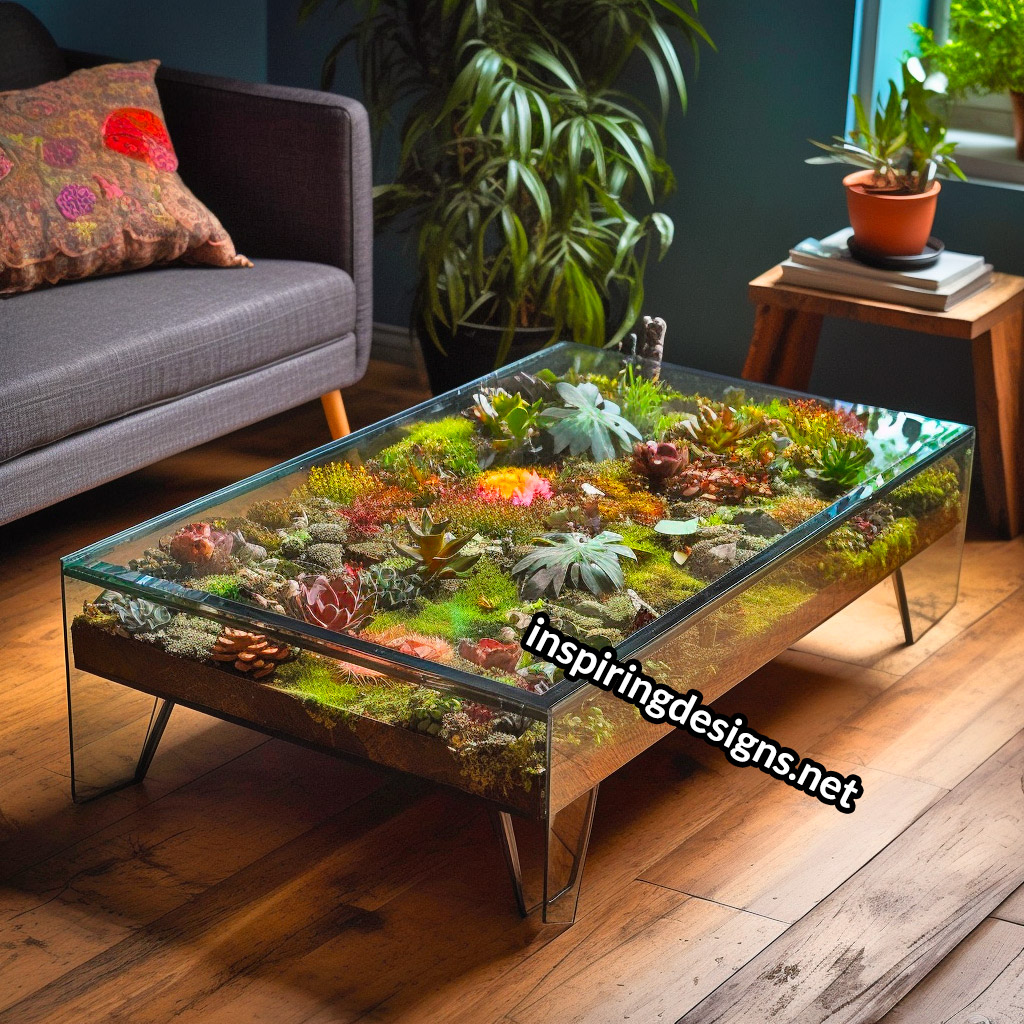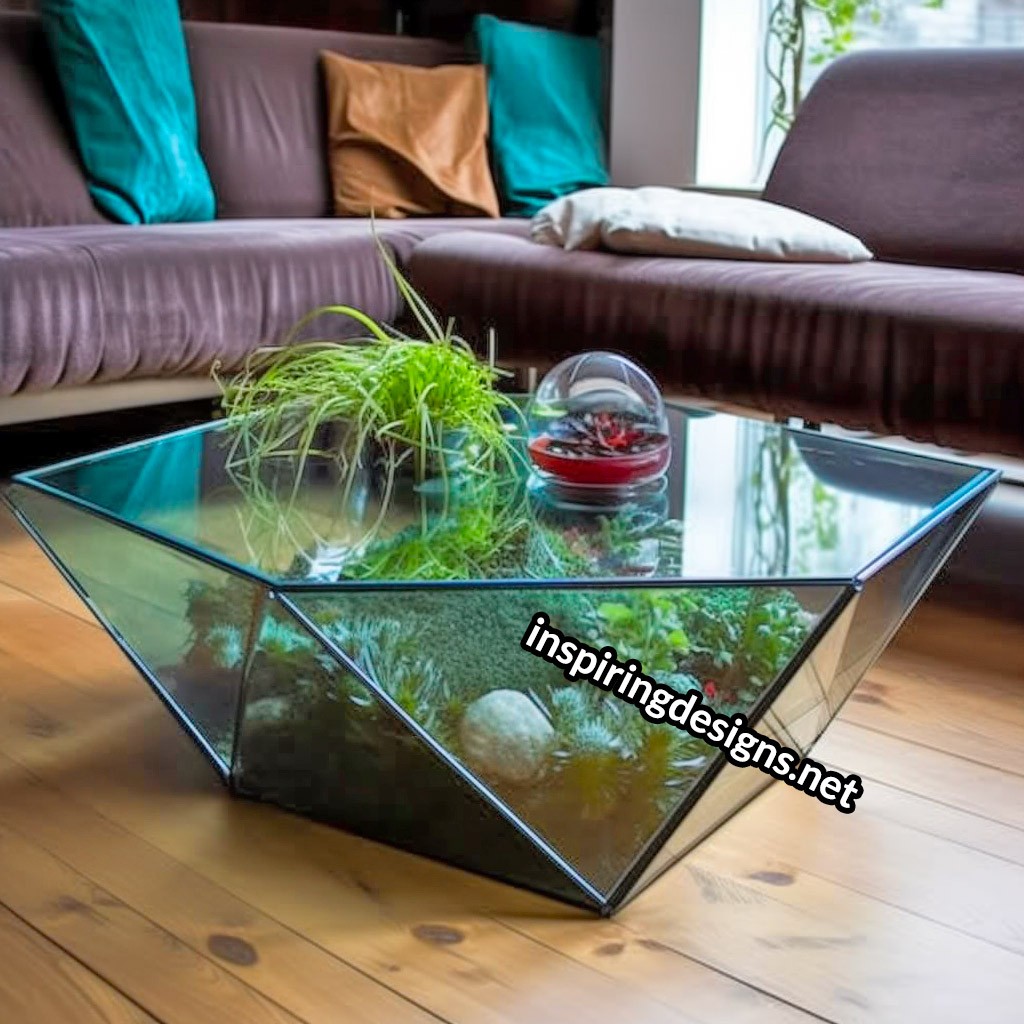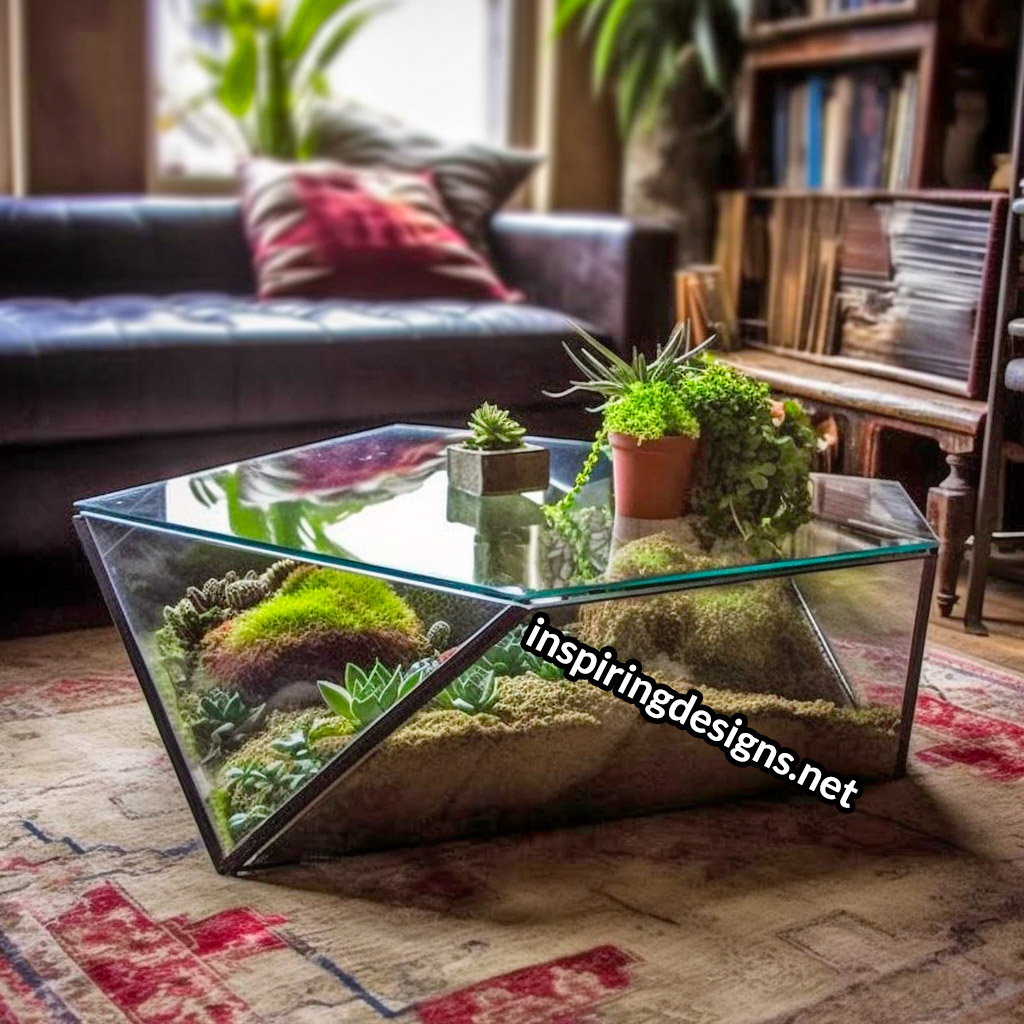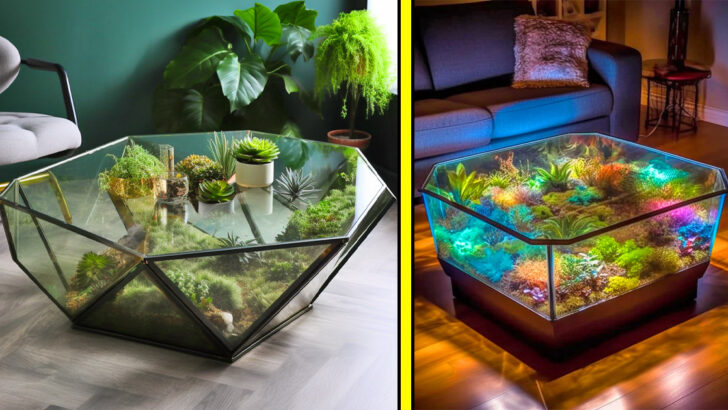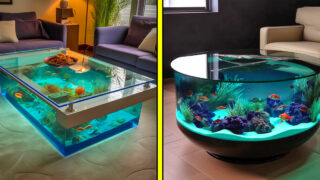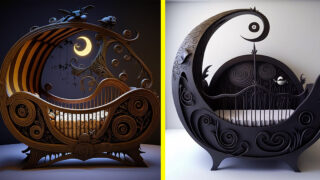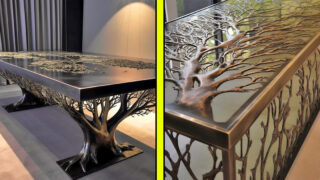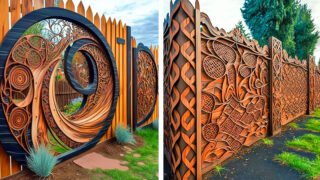Imagine a world where the wonders of nature and interior design collide in a captivating display of beauty and functionality. Welcome to the delightful realm of glass terrarium coffee tables! These enchanting creations offer more than just an intriguing conversation starter – they transform your living space into a lush oasis teeming with miniature ecosystems. So, buckle up and join us on an adventure as we delve into the fascinating universe of these botanical marvels!
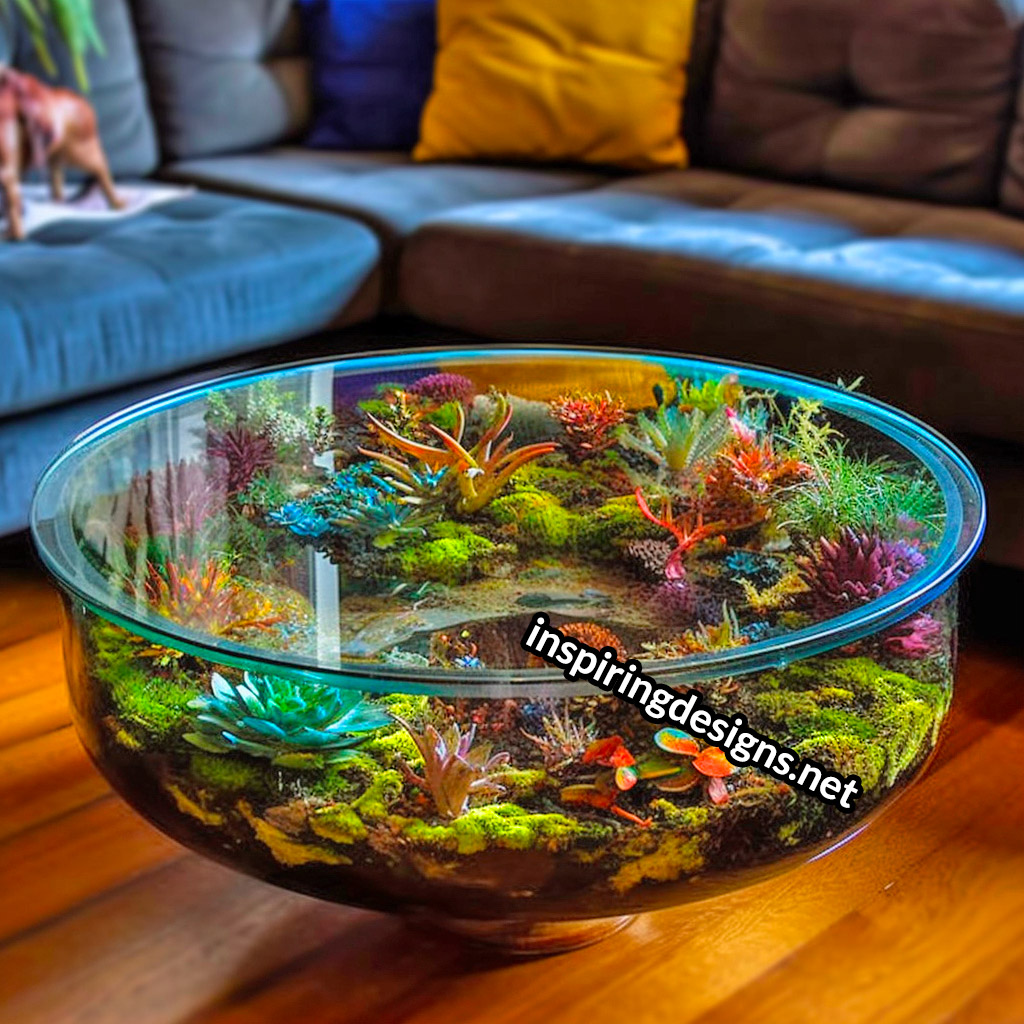
First things first, let’s talk basics. A glass terrarium coffee table consists of a glass container with an opening, housing a self-sustaining ecosystem of plants and microorganisms.
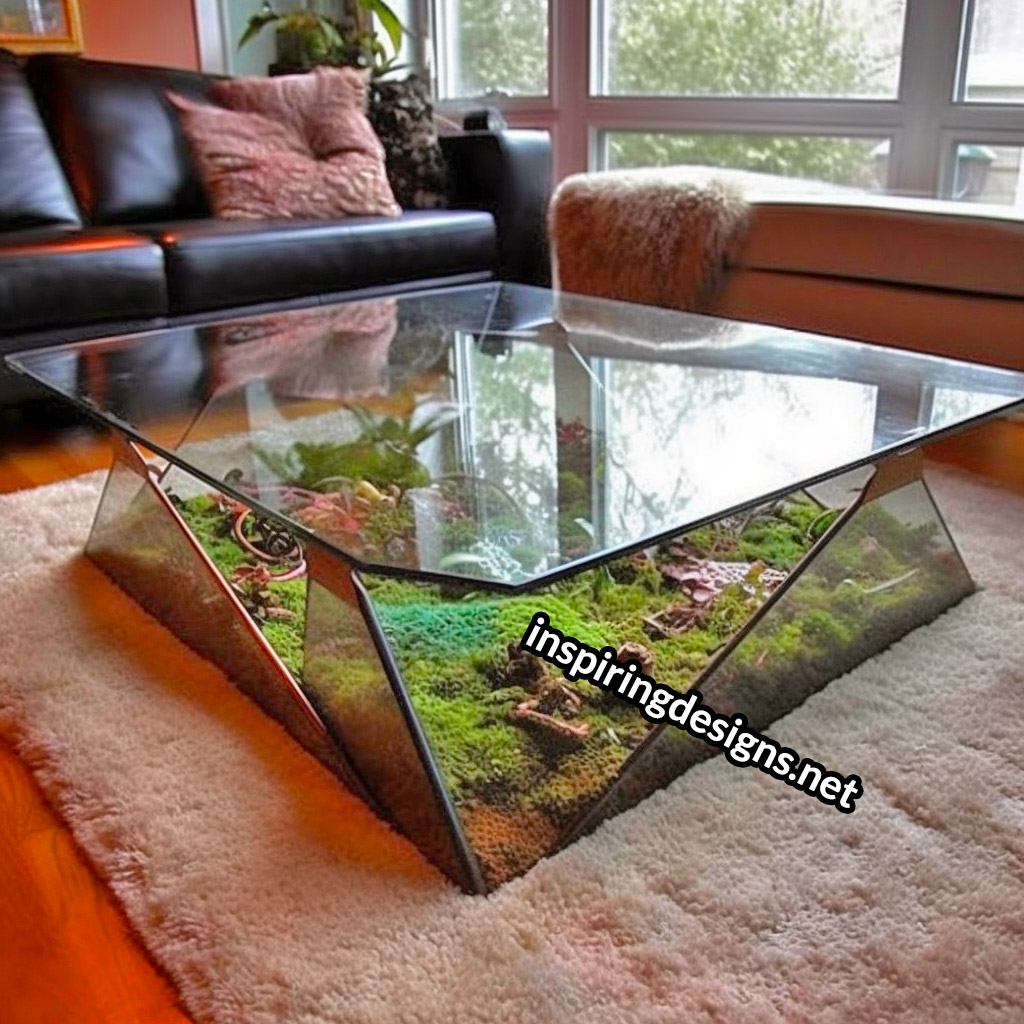
The glass enclosure traps humidity, creating a mini greenhouse that allows plants to thrive with minimal intervention. Intrigued yet?
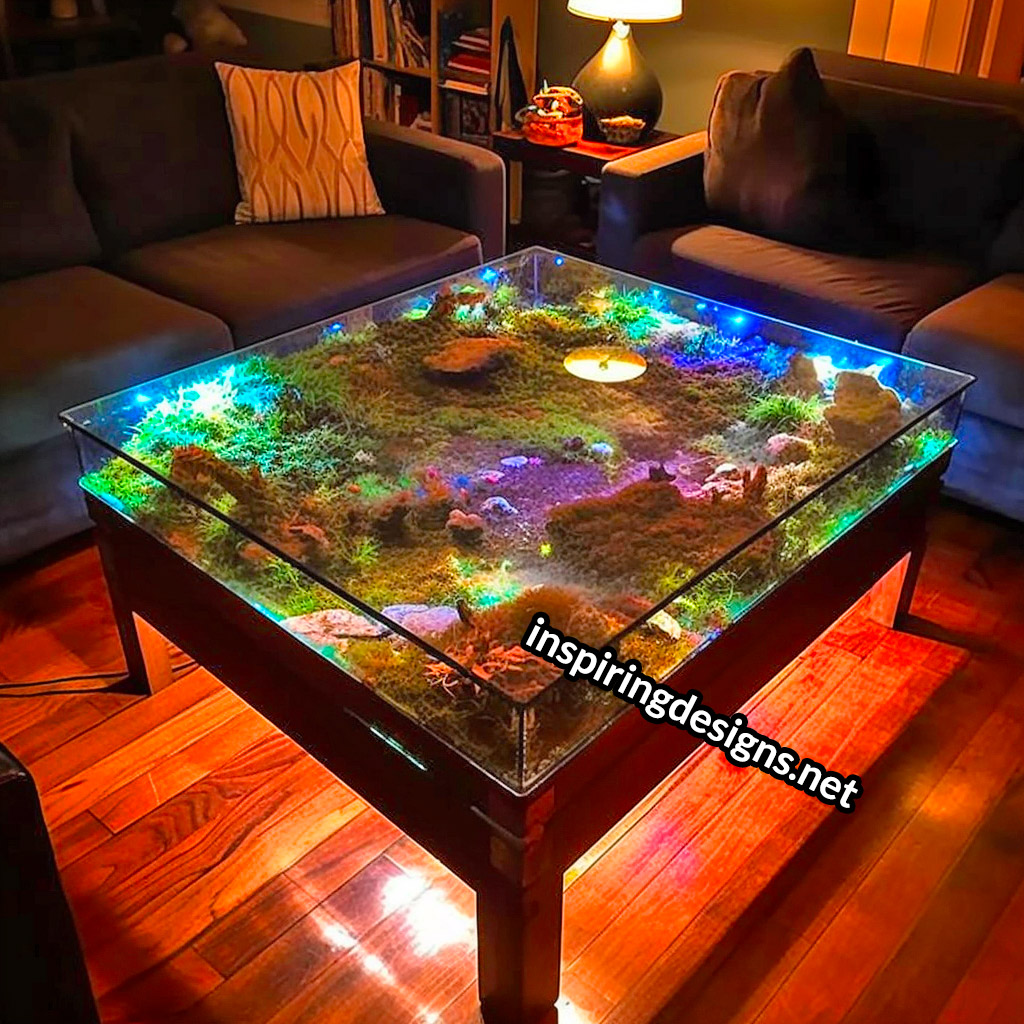
What’s a botanical paradise without a little variety? Choose from an array of plant species to inhabit your coffee table. Some popular picks include ferns, mosses, succulents, and air plants. Just be mindful of their individual needs, like humidity and light requirements, when selecting your mini-forest.
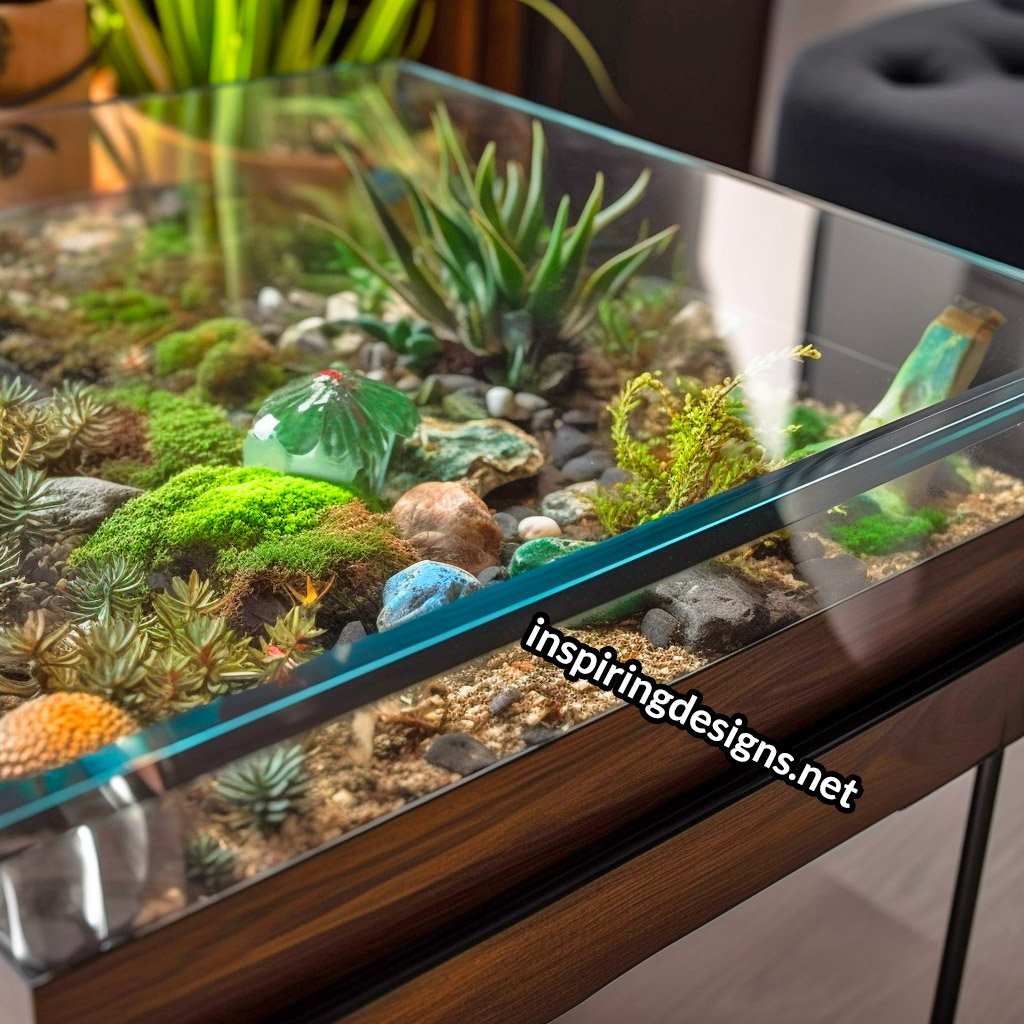
When it comes to shapes and sizes, there’s no shortage of options. From classic squares and rectangles to more avant-garde circles, octagons, and beyond, there’s a terrarium table to suit every taste.
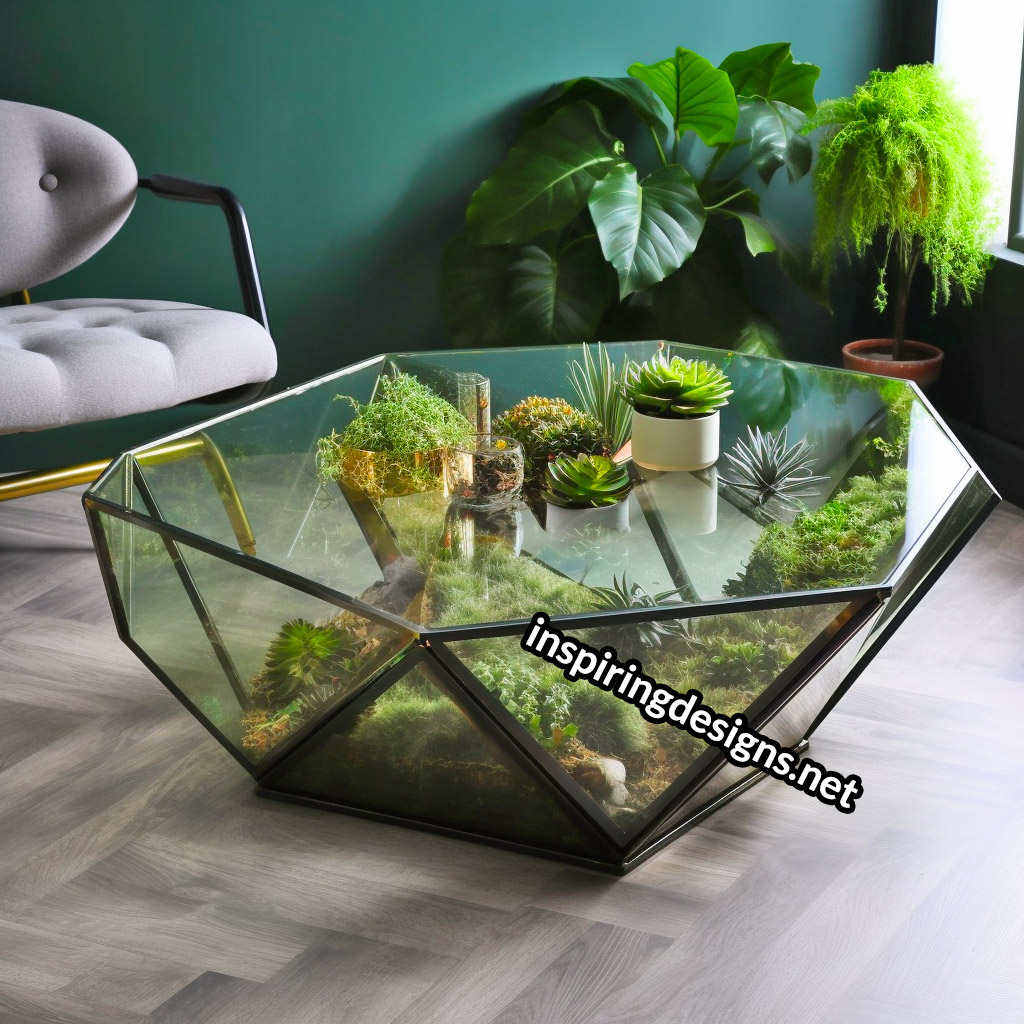
And the fun doesn’t stop there – some even come with built-in storage underneath the glass terrarium area. Talk about a space-saving solution!
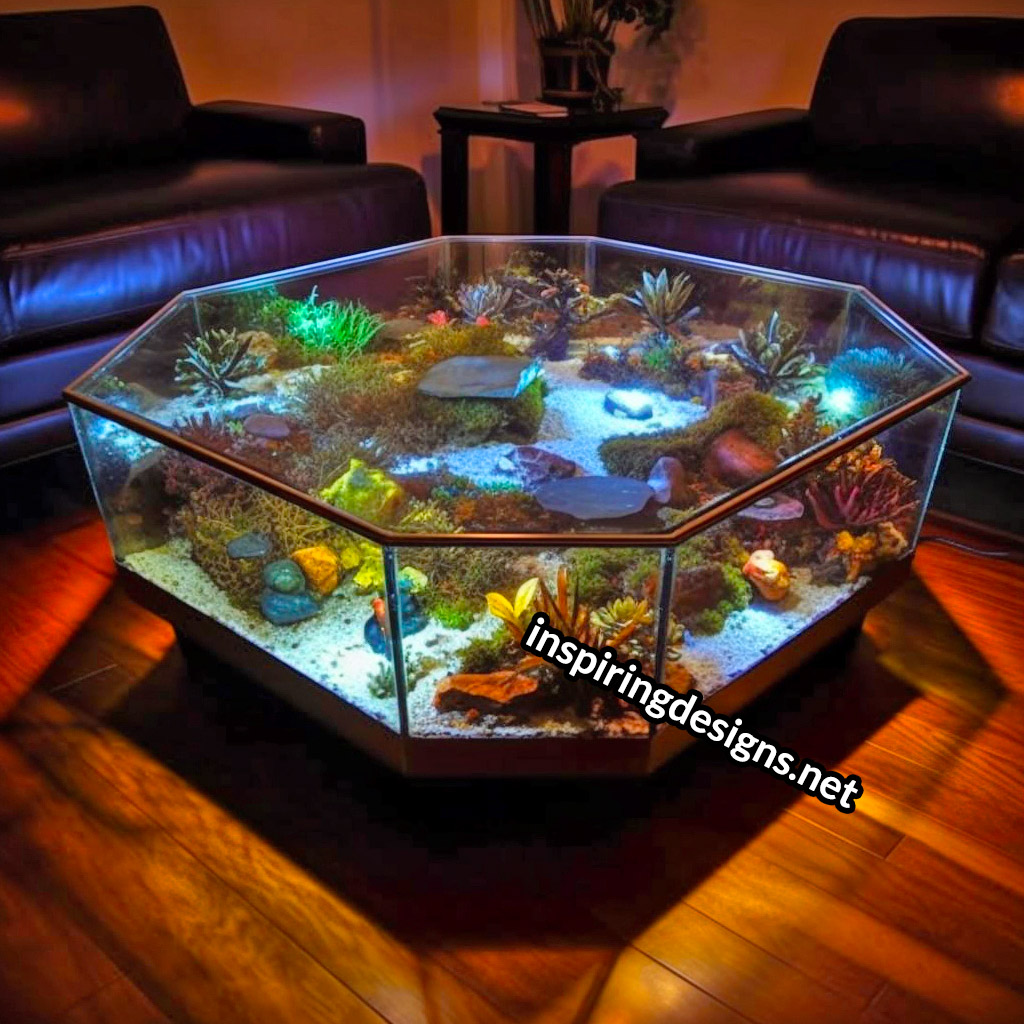
Feeling the call of the disco ball? Why not light up the night with terrarium tables that feature built-in lighting? LED or fluorescent options can provide a dazzling display while also benefiting the plants inside. Disco fever, anyone?

Now, let’s touch on maintenance. While terrariums are generally low-maintenance, your coffee table ecosystem will still need some TLC.
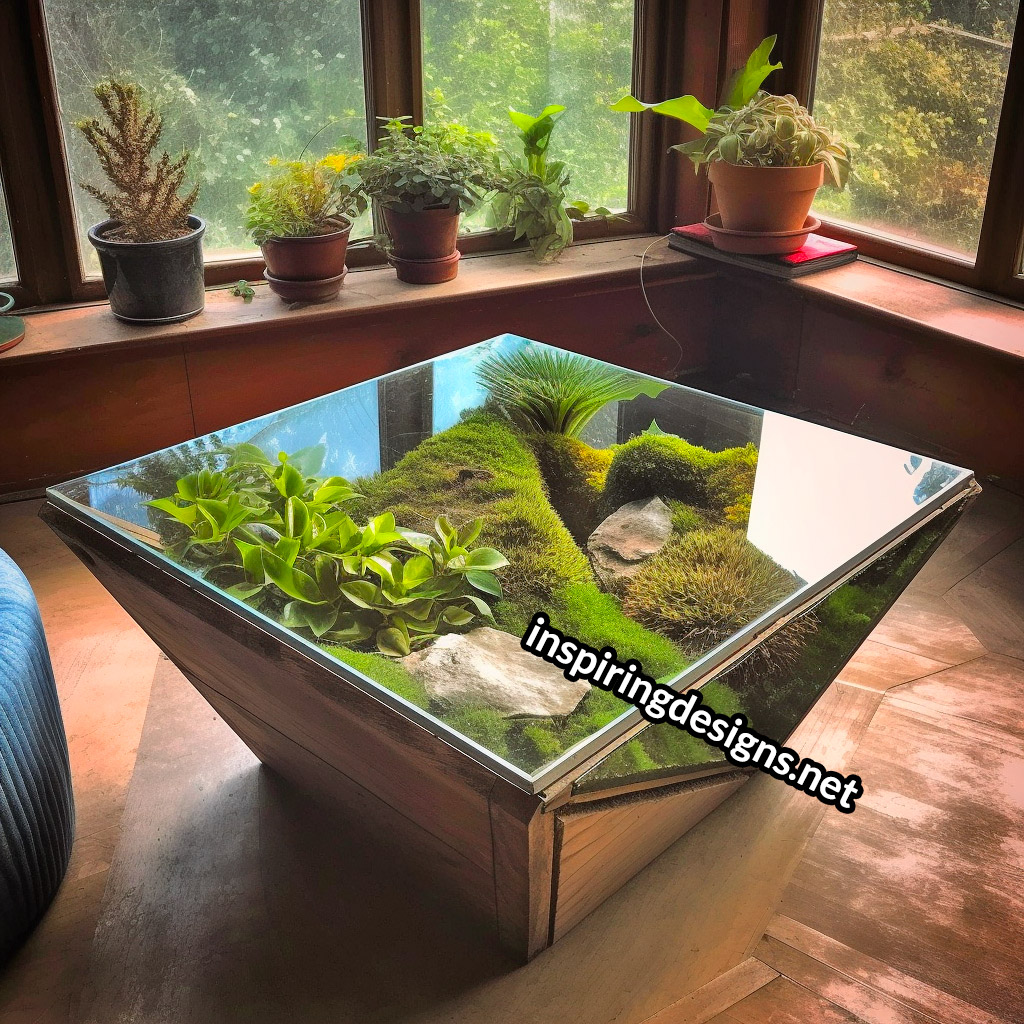
This might involve regular watering, pruning, and pest control. But fret not, green thumbs! The reward of a lush, thriving terrarium is well worth the effort.
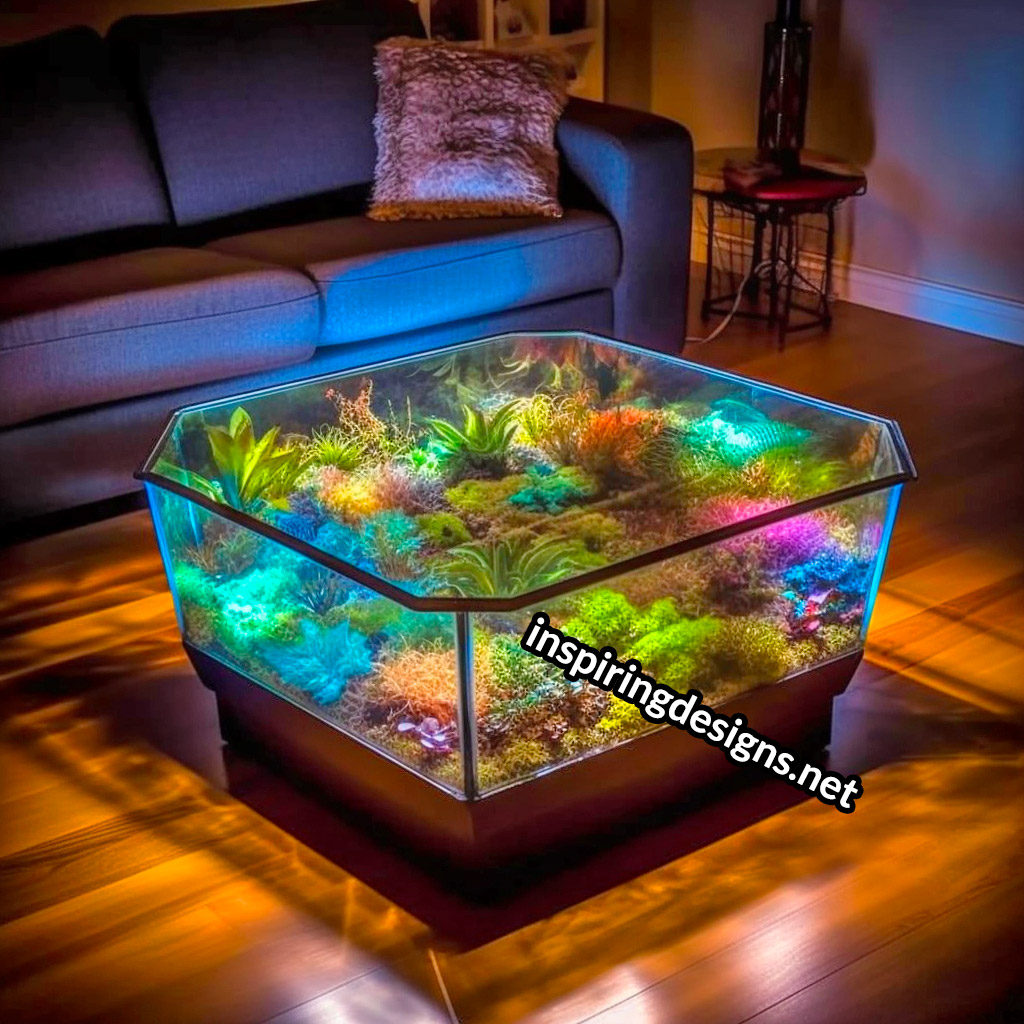
If you’re wondering about the price tag, a custom-made terrarium coffee table could set you back anywhere from a few hundred to a few thousand dollars, depending on the size, materials, and features.
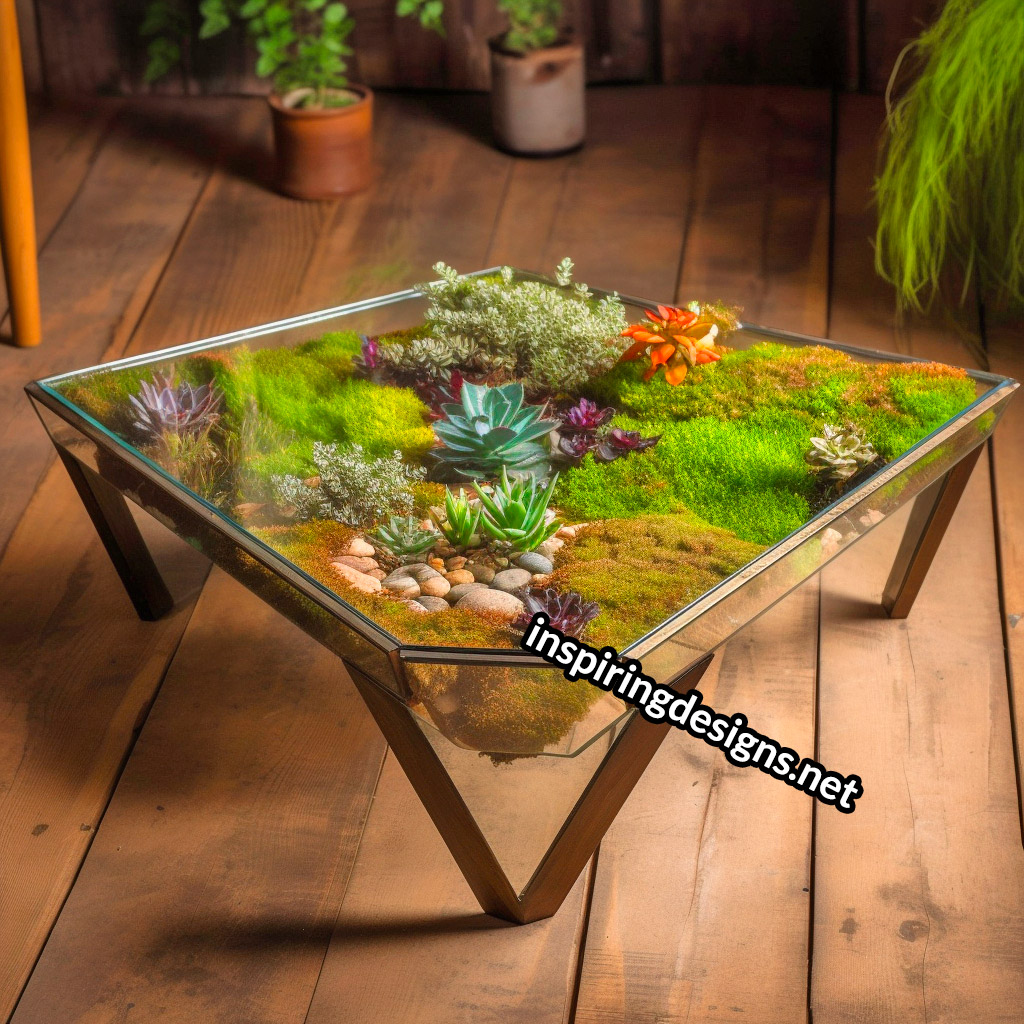
However, if you’re the crafty type, you can always upcycle an old glass coffee table to create your own masterpiece on a budget.
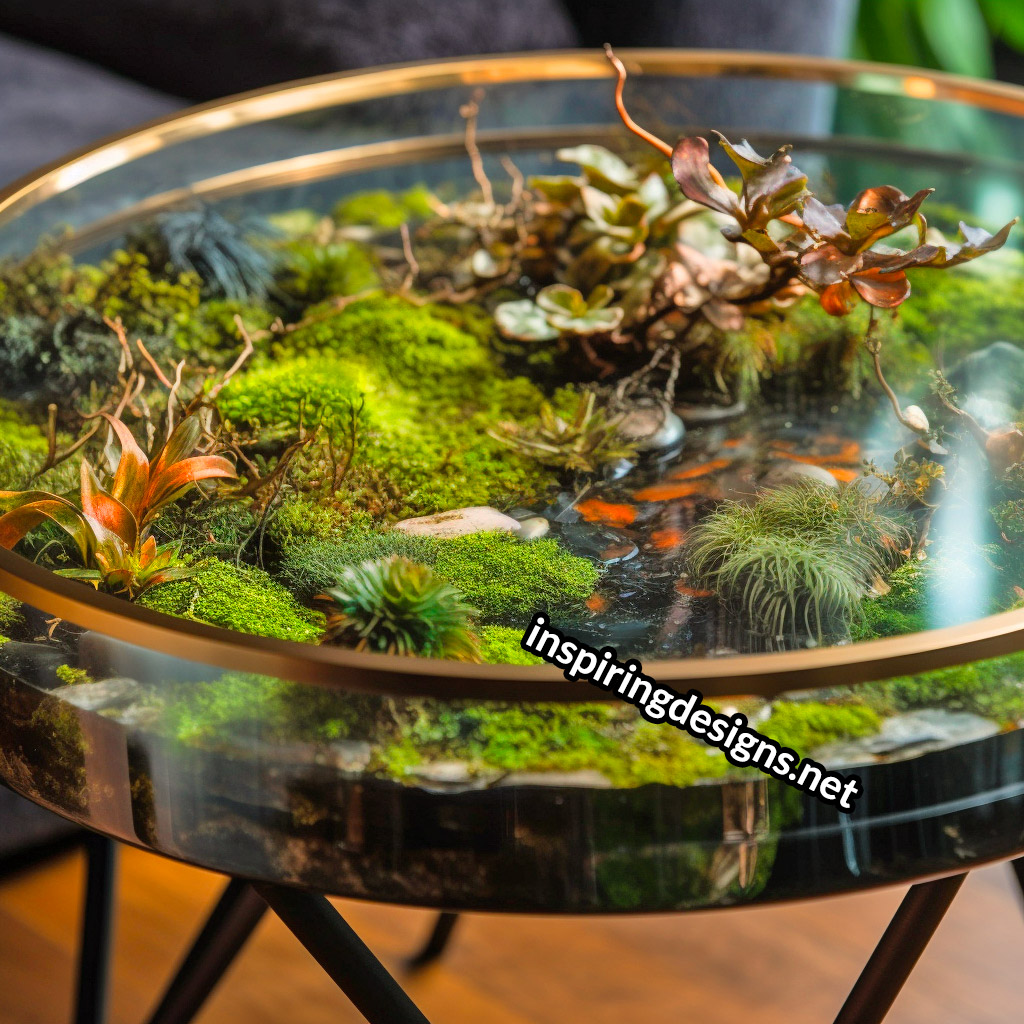
The benefits of owning a coffee table terrarium extend beyond aesthetic appeal. They can help purify the air, increase humidity levels, and even reduce stress. Plus, they’re an excellent way to showcase your plant parenting prowess.
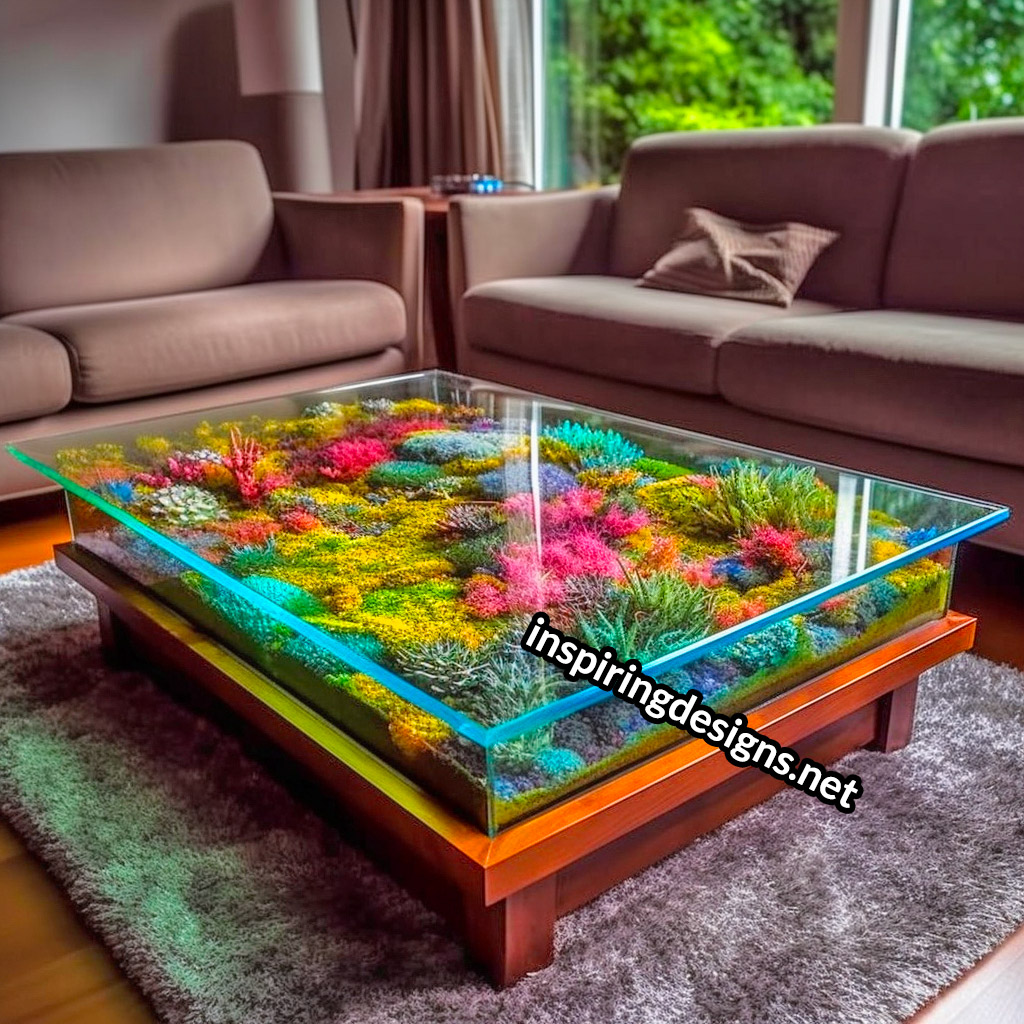
Speaking of aesthetics, terrarium tables can fit seamlessly into a variety of interior design styles…
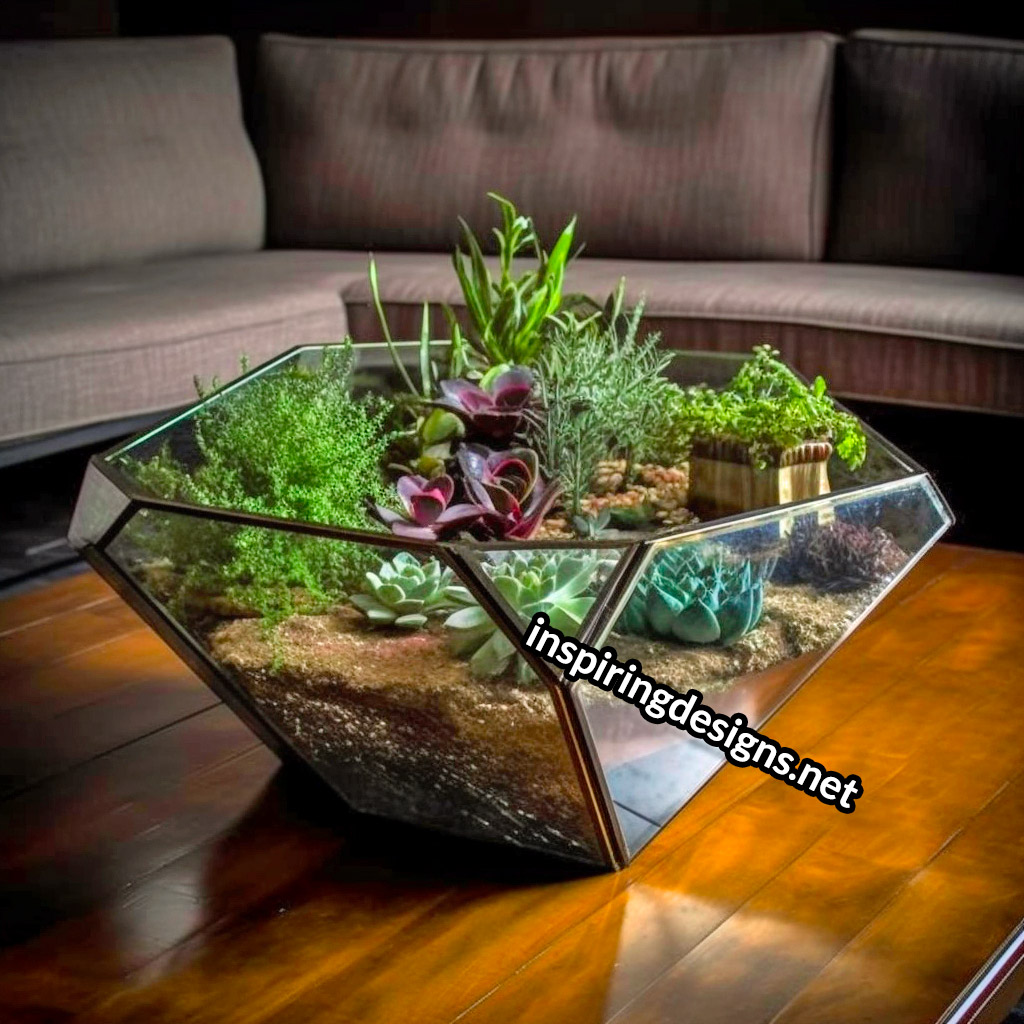
Whether you’re a fan of bohemian, modern, minimalist, or industrial chic, there’s a terrarium table to complement your space.
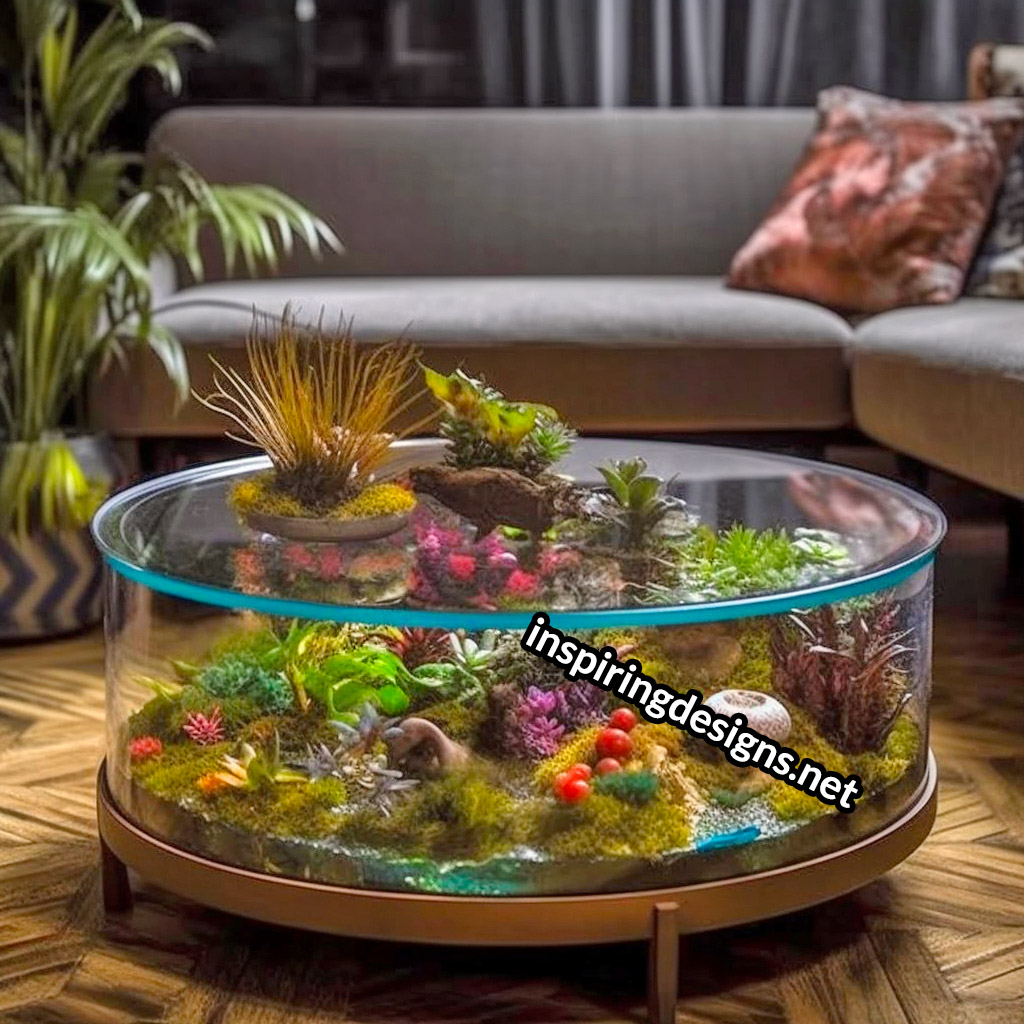
And if you’re still not convinced, just imagine the looks of awe and envy on your guests’ faces when they lay eyes on your stunning coffee table terrarium. Prepare to become the talk of the town!
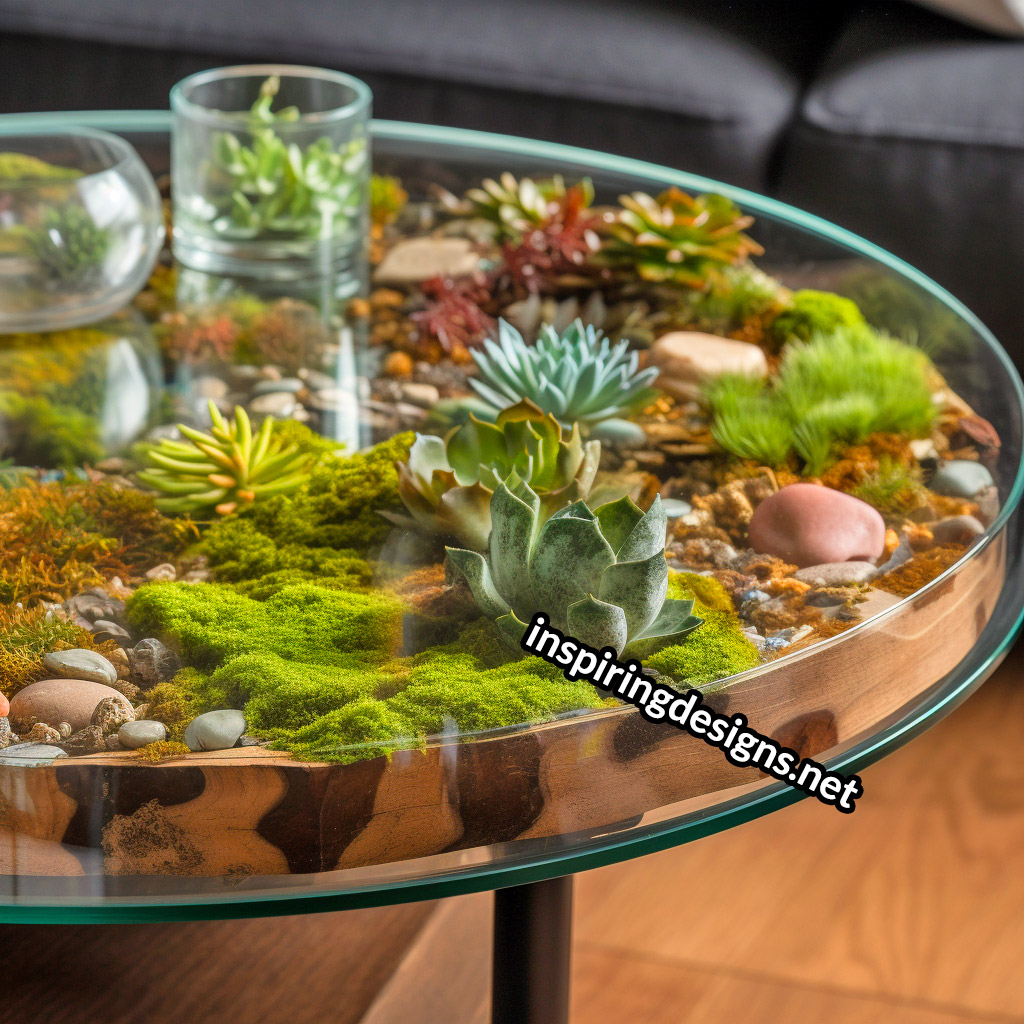
The best spot for an opening to access the plants inside would be at the side or top of the table. This allows for easy maintenance without disturbing your verdant oasis or your coffee cup.
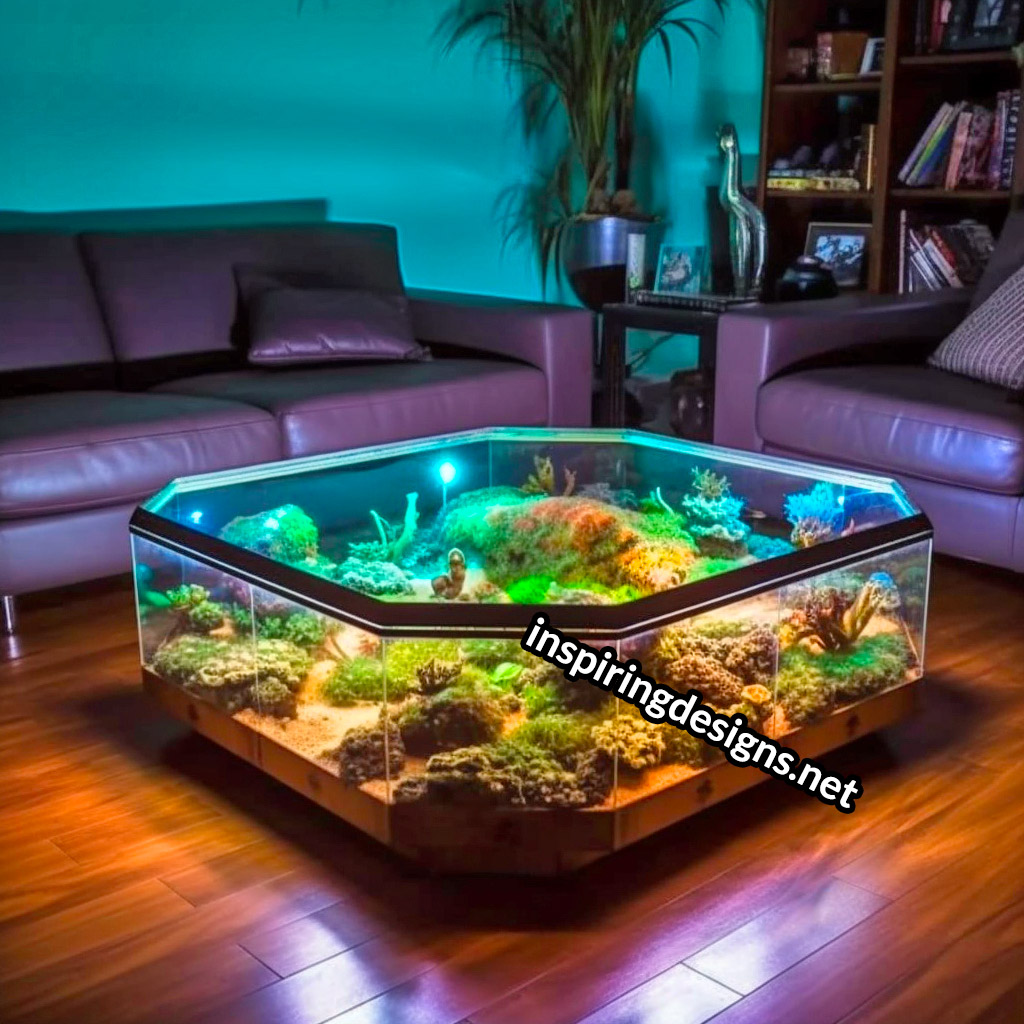
Now let’s talk bugs. While not everyone’s cup of tea, some critters can add value to your coffee table terrarium.
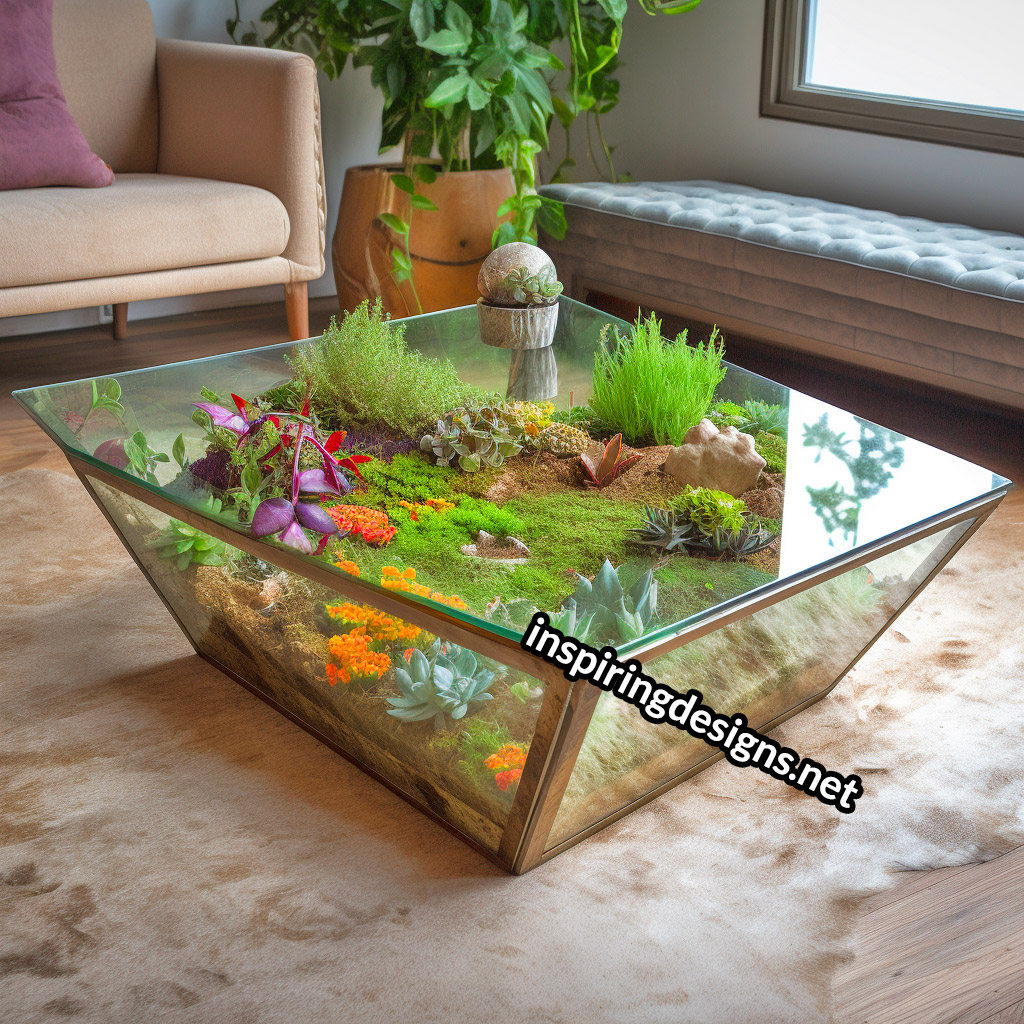
For example, springtails and isopods can help break down organic matter, contributing to a healthier ecosystem. Just be sure to research the compatibility of any creatures you introduce to your terrarium.

In the end, a glass terrarium coffee table is more than just a piece of furniture. It’s a living, breathing work of art that brings the wonders of nature into your home. So, why not invite Mother Nature in for a cup of coffee?
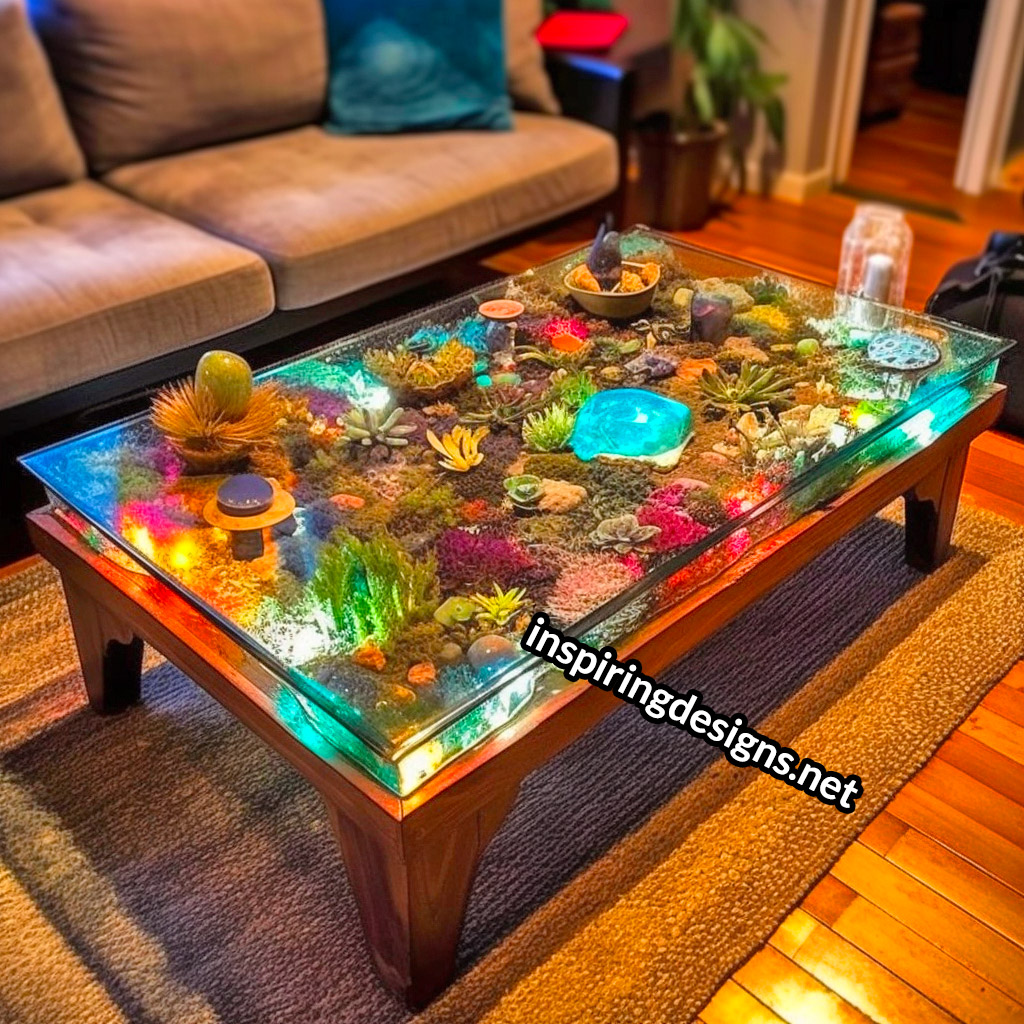
Creating a square glass terrarium coffee table can be a rewarding DIY project that brings both functionality and natural beauty to your living space. Here’s a detailed set of instructions to help you get started:
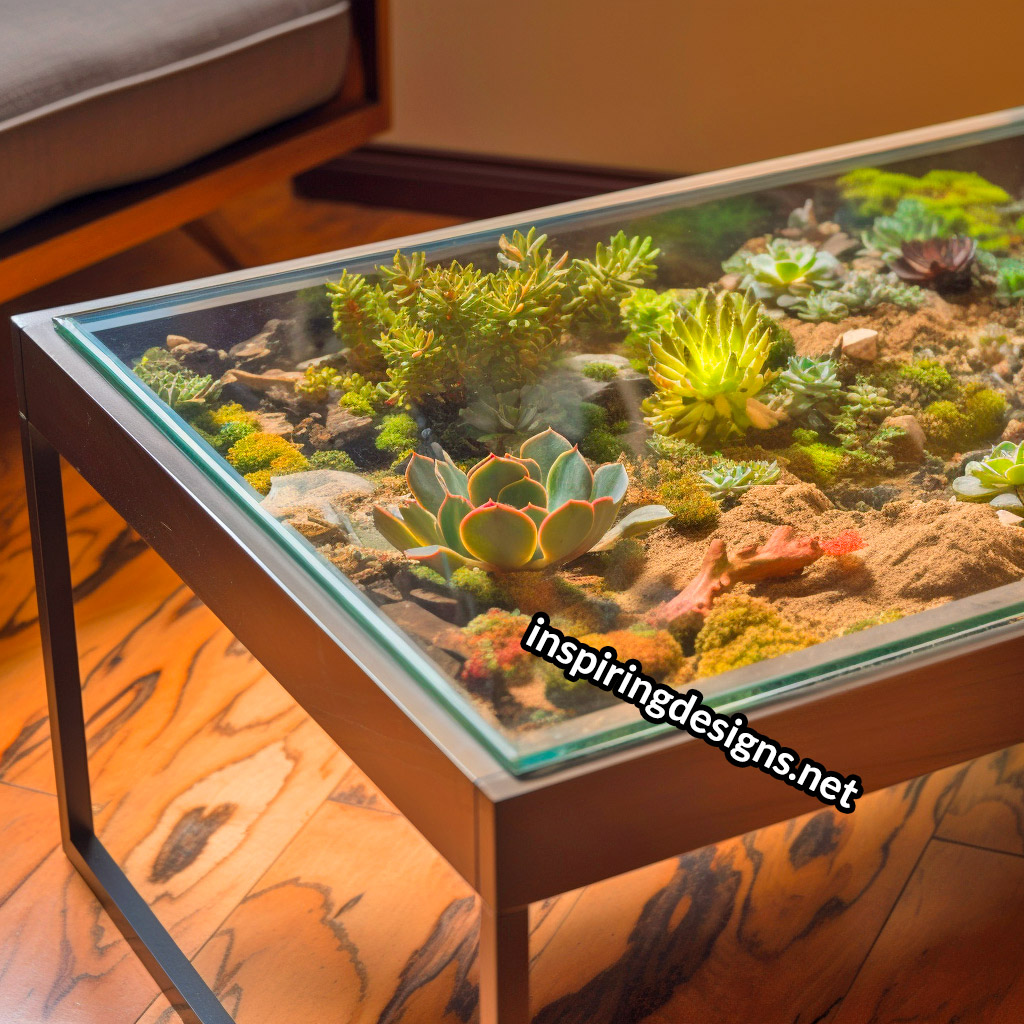
Supplies and materials you’ll need for creating a glass terrarium coffee table:
- A square glass-top coffee table with a hollow interior or open bottom
- Four pieces of tempered glass or acrylic sheets (custom-cut to fit the sides of your coffee table)
- Glass or acrylic glue (UV-resistant, if possible)
- Silicone sealant (aquarium-safe)
- A drill with a glass or acrylic drill bit
- Small hinges and screws
- A latch or magnetic closure system
- Small pebbles or gravel
- Activated charcoal
- Potting soil (suitable for your chosen plant species)
- A variety of plants (e.g., ferns, mosses, succulents, or air plants)
- Decorative elements (optional, e.g., rocks, driftwood, or figurines)
- Gardening gloves, trowel, and pruning shears
- A spray bottle with water
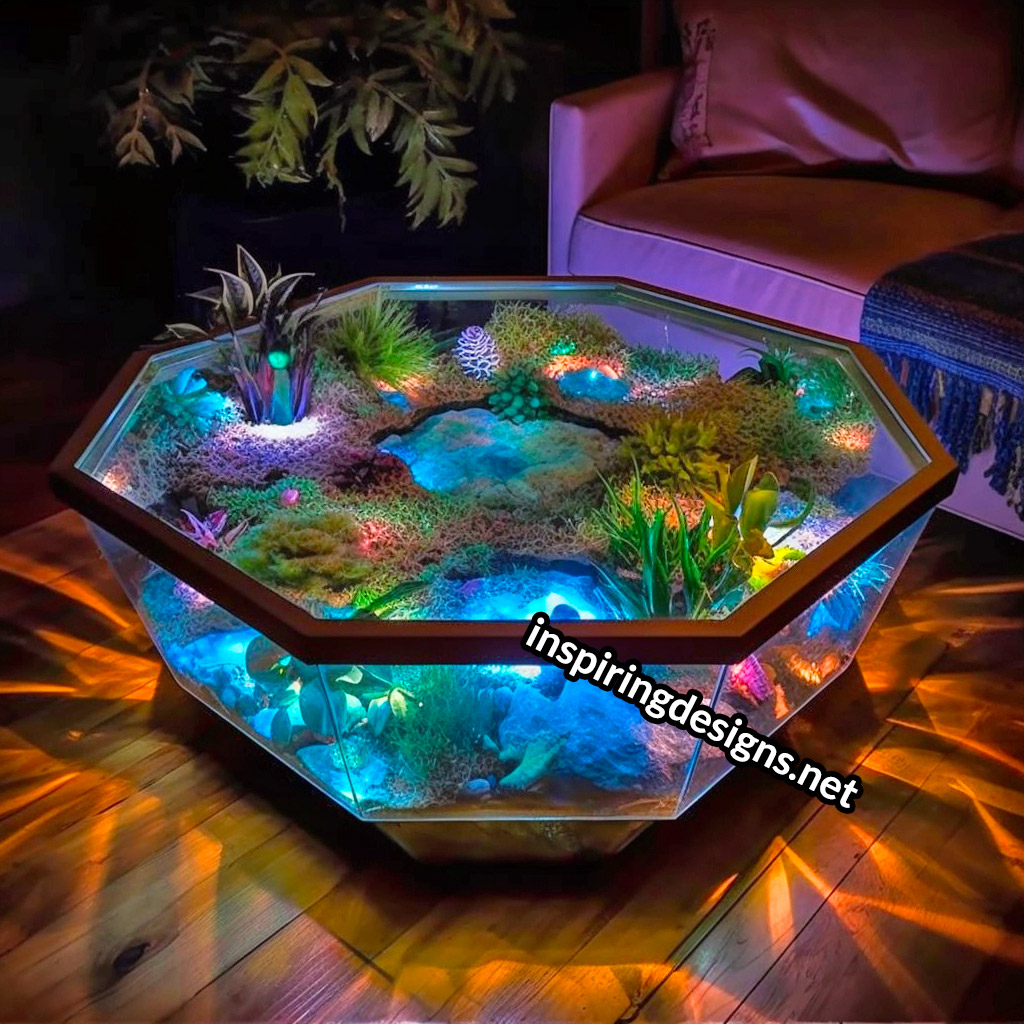
Instructions for creating a DIY terrarium coffee table:
- Prepare the coffee table: If your square glass-top coffee table has a hollow interior, clean it thoroughly. If it has an open bottom, attach the custom-cut glass or acrylic sheets to the sides using the glass or acrylic glue, creating a closed container. Allow the glue to dry according to the manufacturer’s instructions.
- Drill an access hole: Choose one side of the table where you want to create an opening for plant maintenance. Using the drill with the appropriate bit, carefully drill a hole large enough to accommodate your hand. Smooth out any rough edges.
- Attach the door: Attach two small hinges to one side of the access hole and the corresponding side of a glass or acrylic piece that’s slightly larger than the hole. Secure the hinges with screws. Attach a latch or magnetic closure system to the opposite side of the door.
- Seal the edges: Apply a bead of silicone sealant along the inner edges of the glass or acrylic sheets where they meet the coffee table frame. This will create a watertight seal, preventing moisture from escaping. Allow the sealant to cure according to the manufacturer’s instructions.
- Create a drainage layer: Add a 1-2 inch layer of small pebbles or gravel to the bottom of the table. This will allow excess water to drain away from the plants’ roots.
- Add activated charcoal: Spread a thin layer of activated charcoal on top of the drainage layer. This will help filter the water and prevent mold and bacteria growth.
- Add potting soil: Add a layer of potting soil suitable for your chosen plant species, ensuring it’s deep enough to accommodate their roots.
- Plant your terrarium: Wearing gardening gloves, arrange your plants inside the table, leaving enough space between them for growth. Use a trowel to dig small holes and gently place the plants in the soil. Pat the soil down around the roots.
- Decorate: Add decorative elements such as rocks, driftwood, or figurines to enhance the appearance of your terrarium.
- Water and close the terrarium: Using a spray bottle, lightly mist the plants and soil with water. Close the access door, ensuring the latch or magnetic closure system is secure.
- Position the table: Place your square glass terrarium coffee table in a spot where it will receive the appropriate amount of light for your chosen plants. Avoid direct sunlight, as the glass may magnify the light and heat, potentially harming the plants.
- Maintenance: Regularly check on your plants to ensure they’re healthy and growing well. Adjust the watering schedule as needed to prevent over- or under-watering. Prune any overgrown or dead leaves and branches to keep the terrarium looking tidy. Keep an eye out for pests and treat them accordingly if they appear.
- Ventilation: While a closed terrarium helps maintain humidity, it’s essential to provide occasional ventilation to prevent mold growth and ensure fresh air circulation. Open the access door every few weeks for a few hours to allow fresh air to enter.
- Lighting: If your terrarium isn’t receiving enough natural light, consider adding an artificial light source, such as an LED or fluorescent bulb. This will ensure your plants get the necessary light they need to grow and thrive.
- Fertilization: Since the terrarium is a closed environment with limited nutrients, you may need to provide your plants with occasional fertilization. Use a diluted, balanced liquid fertilizer to feed your plants, following the manufacturer’s instructions for application rates and frequency.
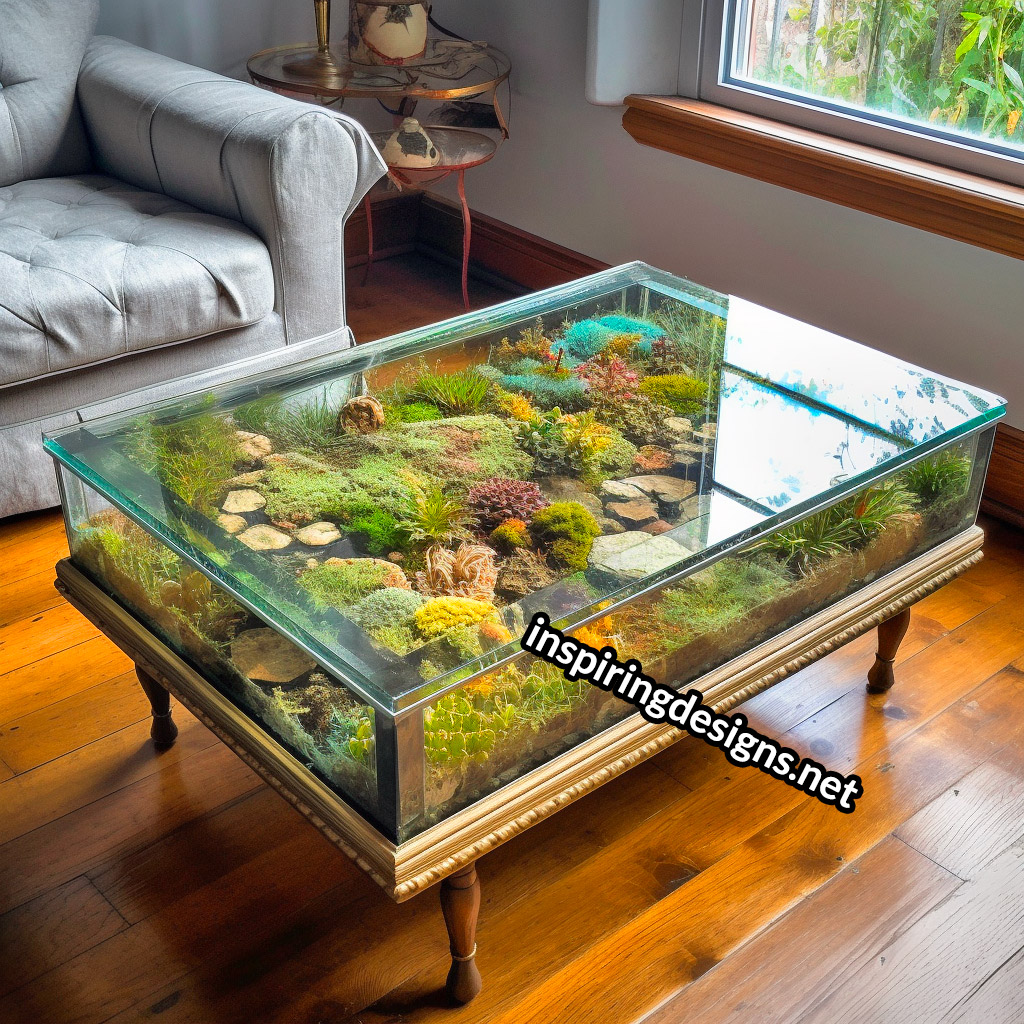
With proper care and maintenance, your glass terrarium coffee table will not only serve as a functional piece of furniture but also as a living, breathing work of art that brings a little slice of nature into your home. Enjoy the mesmerizing beauty of your miniature ecosystem as it evolves and grows over time!
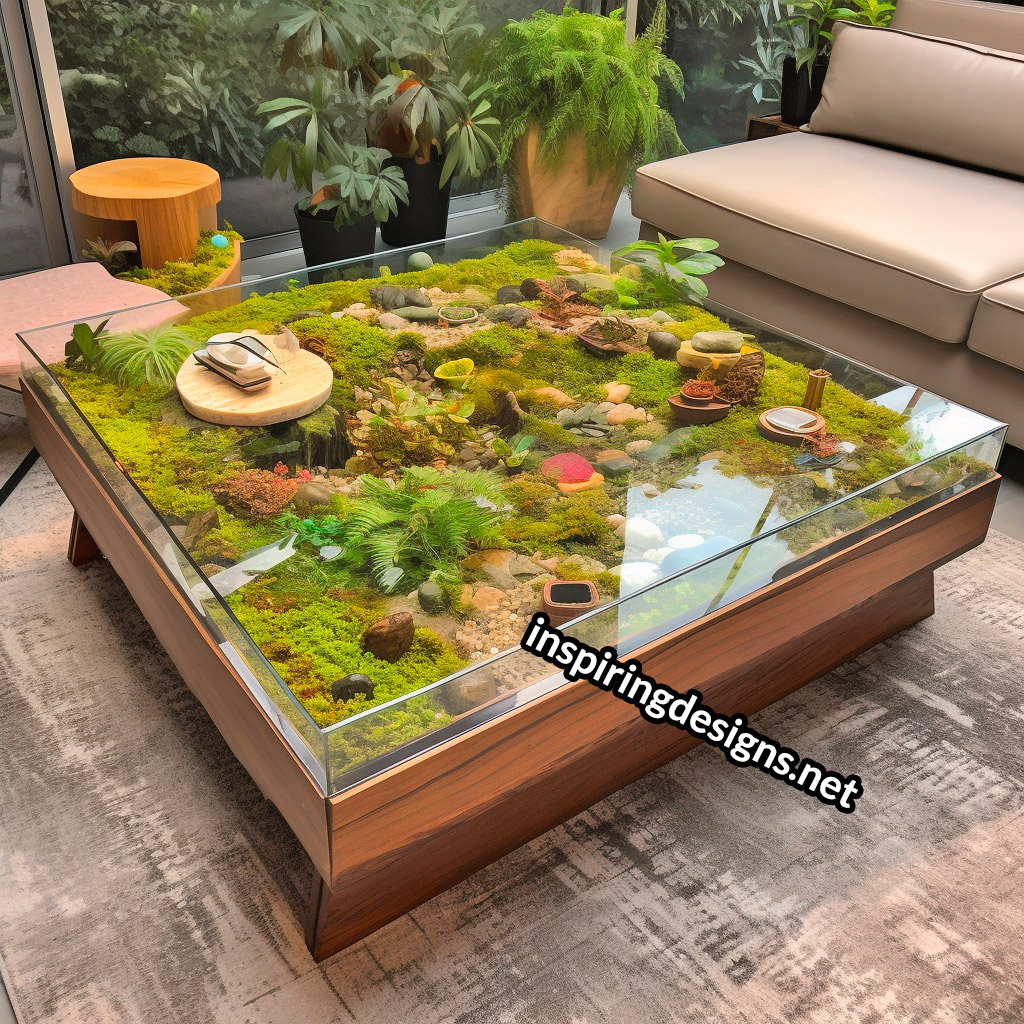
Be sure to check out both Etsy and Amazon for pre-made terrarium coffee tables if you’d rather not go the DIY route!
